The rise of remote learning
Technology management solution company Jamf says the learning environment no longer needs to be stuck within four walls

Education is in the midst of a digital classroom revolution. Technology is taking an increasingly central role in how lessons are delivered and how students are learning. The preeminent technology facilitating and propelling this new landscape is mobile devices, and tablets in particular, as schools and universities embrace the possibilities offered by remote learning.
Mass adoption of consumer technology, like Apple’s, are enabling educators to re-imagine the way in which they run their class structures. For example, some schools are implementing ‘flipped classrooms’, where students are encouraged to learn theory at home using devices, and use lesson contact to put the theory into practice. At higher education, entire courses and assessments are being delivered online in the comfort of homes.
The rise of mobile and remote learning has even helped educators to continue to teach in places that may not be easily reached, after disasters and during pandemics.
Embracing education technology
Education is embracing the consumer technology trends which the majority of students are already familiar with and use. Education technology can only improve education standards by empowering students to learn at their own pace through engaging tools on platforms they use outside the learning environment.
Mobile technology also offers teachers a way to keep students learning in and out of the classroom, increasing the capacity of the number of students being taught, and the ability to provide extensive updates and reports to parents in a more personalised, paperless fashion.
Similarly to the corporate world, how these devices are protected and managed by the IT team will determine the success of remote learning. In this respect, school and university IT teams will increasingly operate like enterprise IT teams, faced with the same issues of technical support, access management and maintenance.
Tech is the perfect teaching assistant
For teachers to get the best out of remote learning, they must be afforded the space to teach rather than spend lesson time on managing content students have access to, updating software, security concerns or device maintenance. Having an effective policy in place not only eases complexity, allowing teachers to get on the job of teaching, it also provides the teacher with the freedom to alter the apps and access of the device should they see fit.
Device management forms a vital pillar of digital learning as education institutions look to maintain an overview of all these devices, whilst empowering both the student and the educator. When these devices number into the hundreds or even thousands, there is a risk that the IT department will be overwhelmed without a firm management plan in place.
A robust roll out strategy solution will help ensure that educators continue to closely manage the classroom, curriculum and assessment without requiring heavy involvement from the IT department. These device management solutions will not only benefit teachers, but also help students focus on their education, without worrying about downloading digital textbooks, updating software, or installing apps, all of which can be easily handled by the IT department in a quick, simple and streamlined fashion.
Digital lessons in session
The learning environment no longer needs to be stuck within four walls – particularly where being remote may be an absolute requirement. By adopting more familiar consumer technology products, that can be managed well, educators can focus on creating engaging content while students can use technology whenever and wherever they are.
To learn more about you how you can protect and manage Apple devices to ensure remote learning is as simple as possible, request a trial of Jamf School today.






